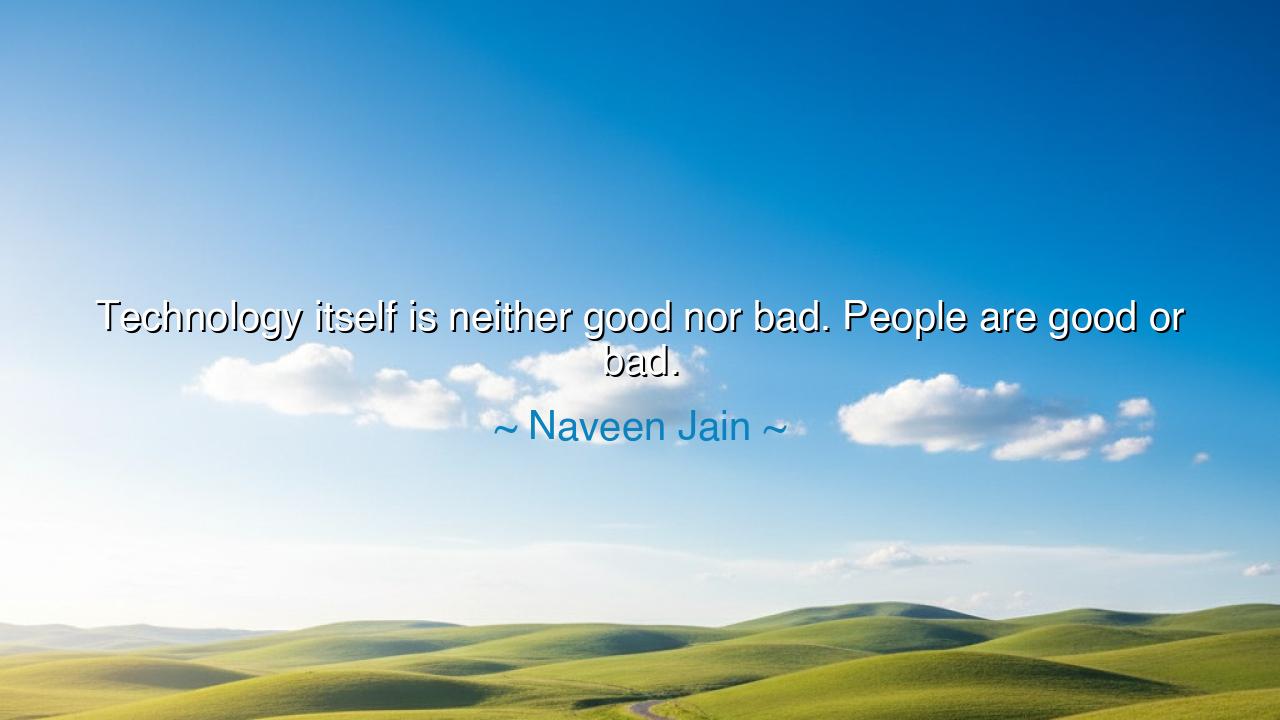
Technology itself is neither good nor bad. People are good or






Hear the voice of Naveen Jain, entrepreneur and dreamer of futures, who declared with clarity: “Technology itself is neither good nor bad. People are good or bad.” In these words lies a timeless truth, older than iron, older than fire itself—that no tool carries moral weight on its own, but only in the hand that wields it. Technology is power, but power is empty until directed by the will of man. Whether it heals or destroys, liberates or enslaves, depends not on the tool but on the soul of the one who commands it.
The origin of this wisdom is as old as civilization. When the first men discovered fire, it gave warmth, protection, and the ability to cook food; yet that same fire, loosed in rage, burned villages and destroyed lives. The tool itself was not good nor evil—it merely obeyed the hand that set it to purpose. So it has been with every advancement since: the plow that tills the soil may also tear up fields in war; the printing press that spreads scripture may also spread lies; the atom split for energy may also shatter cities. In each case, technology revealed the heart of man, but did not dictate it.
History gives us examples etched in fire. Consider Alfred Nobel, who invented dynamite intending it to aid in construction, to move mountains and build cities. Yet it was soon wielded for war, to tear apart armies and lands. Stricken with guilt at how his invention was used, Nobel dedicated his fortune to peace and progress, founding the Nobel Prizes. The dynamite was neither good nor evil—it was the men who chose its purpose that bore the weight of morality.
The ancients too understood this principle. The sword, in their time, was seen as an instrument of justice in the hand of the righteous, but of tyranny in the hand of the cruel. “It is not the sword that kills,” the wise would say, “but the man who wields it.” Jain’s modern words echo this ancient refrain, reminding us that though our tools have changed—no longer swords and shields but satellites, algorithms, and machines of silicon—the responsibility remains the same.
The deeper meaning of Jain’s words is a call to responsibility. Too often in our age, men blame technology for the world’s ills, saying that machines make us cold, or that networks corrupt our youth. But these are excuses. The tool does not command—it is commanded. A machine does not choose cruelty or compassion; it mirrors the choice of its master. To condemn the tool is to ignore the deeper truth: the moral struggle lies within us, not within the metal and code we create.
What lesson, then, should future generations take from this? It is this: do not fear technology, but fear the misuse of it. Do not worship it as savior nor curse it as destroyer. Instead, cultivate within yourselves the virtues that will guide its use: wisdom, compassion, justice, and humility. For as men are, so will their tools become—reflections of their hearts, amplifiers of their intentions. If the heart is good, the tool builds; if the heart is corrupt, the tool destroys.
Therefore, let your actions be thus: before you build, first examine your heart. Before you wield a tool, ask what purpose it serves. Teach your children not only how to master machines, but how to master themselves. Remember always that technology is the clay, but humanity is the sculptor. And as Naveen Jain proclaimed, the moral weight lies not in the tool, but in the soul of the one who wields it. For in the end, it is not the machine that is good or bad—it is people. And therein lies both the peril and the hope of the world.






AAdministratorAdministrator
Welcome, honored guests. Please leave a comment, we will respond soon